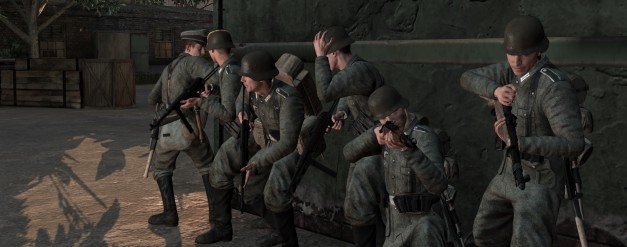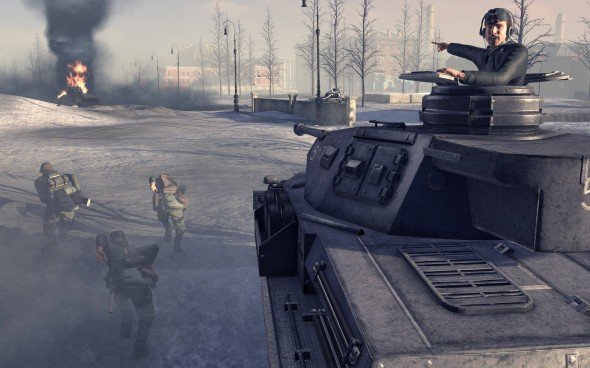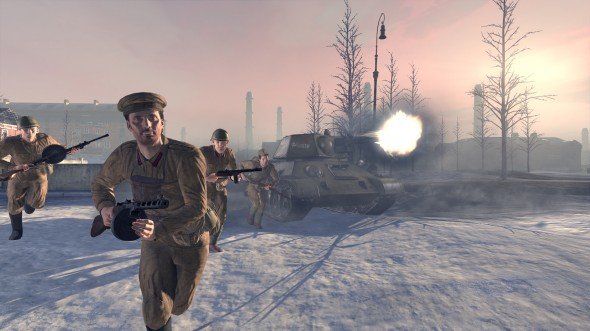Red Orchestra 2: Heroes of Stalingrad preview

'Prod' goes the bayonet. I pull it back for longer. 'Poke' goes the bayonet. It hits the wall of the propaganda building satisfyingly strongly but I'm not convinced it's going to penetrate a flak jacket. I pull it back really hard and OW. My vision blurs and I seem to stagger. It isn't meant to do that!
Oh! Someone's hitting me from behind! Me, the man practising with a bayonet. Stupid boy. I turn around and let go of the bayonet, and it stabs a Nazi in the chest. He falls to the floor immediately and dies. As do I five seconds later when it emerges I'm losing all the blood in the world from my head and have no bandages. We lie there, entangled in each other's arms and it all fades out.
We're in Prague playing a sadly tankless level of Red Orchestra II against Tripwire, the developer on the other side of the world; I wrote about their origins here – Evan's written an extremely comprehensive preview here . The game is, as Evan related, the World War II multiplayer game we always wanted to play; it's totally PC-centric, as you can tell from the ridiculous range of postures available for a first person game; lying, crouching, leaning, hiding behind cover, blind-firing... it's also supremely hardcore; you'd never find a game on a console where the first shot that hits you is normally the last. If you come under fire, your sight blurs to reflect suppression; the way you know how many shots you've got left in your magazine? You guess from the weight of the magazine. I hope you can count...

Through playing the same class a lot, I managed to unlock a 'Hero' character; a rifleman who'd survived long enough that he was now an inspiration to his teammates, giving them a very minor combat bonus. You could tell he was an inspiration because he looked like he'd been dragged backward through a hedge – the more levelled up you get, the more worn your outfit gets. Top soldiers must look like Stig of Stalingrad; my rifleman was a tattered wreck. Mechanically, this means it pays to stay near other troops; certainly in these infantry only battles, having someone else to watch your flank and draw the enemy's fire was absolutely essential.
In fact, the heavy weapons, the fixed gun emplacements and the heavy machine guns (which need mounting to be effective), are only really usable when the map's full and you're moving in a squad, because they draw so much fire and you're such a static target. Despite that, the machine guns are great for suppression themselves, and when mounted can tear through troops who haven't taken advantage of the excellent new cover system.

Welcomely, the game just features Nazis versus Russians, the real meaty battles of the war, where most of the fighting and dying happened. There are ten maps based around Stalingrad, ranging from open tundra to towering buildings, to just plain ruined cityscapes.
Later, when Tripwire had gone to bed, and there were just four then two trigger-happy journalists creeping through the rubble, the game felt very empty, though the combat was more convincing and thrilling because of the huge, empty maps. We roamed the streets, pausing only to do the classic LAN trick of looking at each other's screens or to scream blue murder when we finally found our opponent, frantically bandaging himself beneath a staircase, trying to snipe from a ruined apartment block, or who'd chased us down with fixed bayonet. Not that he could handle it as well as me. Prod! Poke! Stab!
The biggest gaming news, reviews and hardware deals
Keep up to date with the most important stories and the best deals, as picked by the PC Gamer team.

